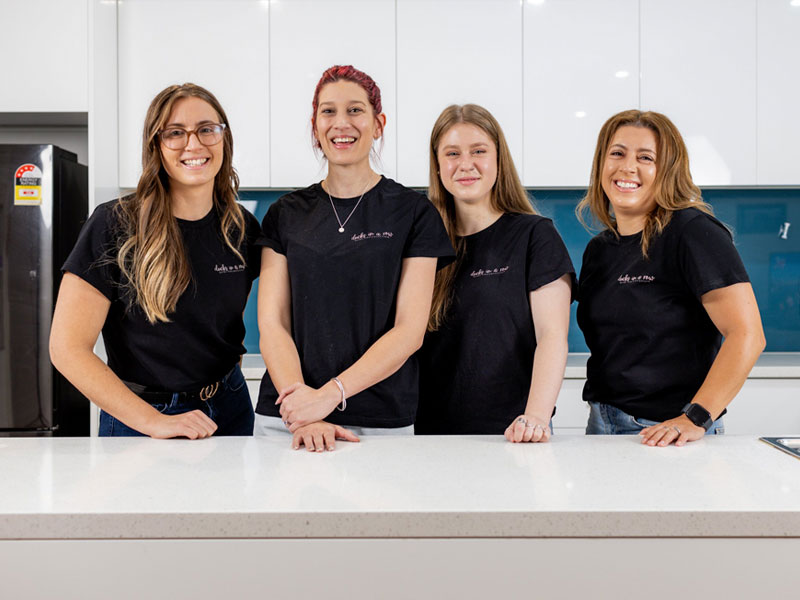If you’re juggling work, school runs, after-school sports, and dinner prep, your pantry can quickly turn into a chaotic mess. Sound familiar? You’re not alone. For many Aussie families, the pantry becomes a dumping ground for half-used packets, mystery tins and forgotten snacks. But a well-organised pantry can be a game changer, saving you time, reducing food waste and making meal planning easier than ever.
When your pantry works for your lifestyle, it frees up more than just shelf space, it gives you back your time, your peace of mind, and those precious minutes you spend hunting for ingredients. Whether you’re navigating school lunch boxes, feeding fussy toddlers, or running a busy household with multiple cooks, having a functional pantry makes everything in the kitchen run more smoothly.
In this ultimate guide, we’ll explore practical pantry organisation tips designed specifically for busy households. Whether you’ve got a walk-in butler’s pantry or a small cupboard, these strategies will help you reclaim control of your space and create a pantry that actually works for your lifestyle.
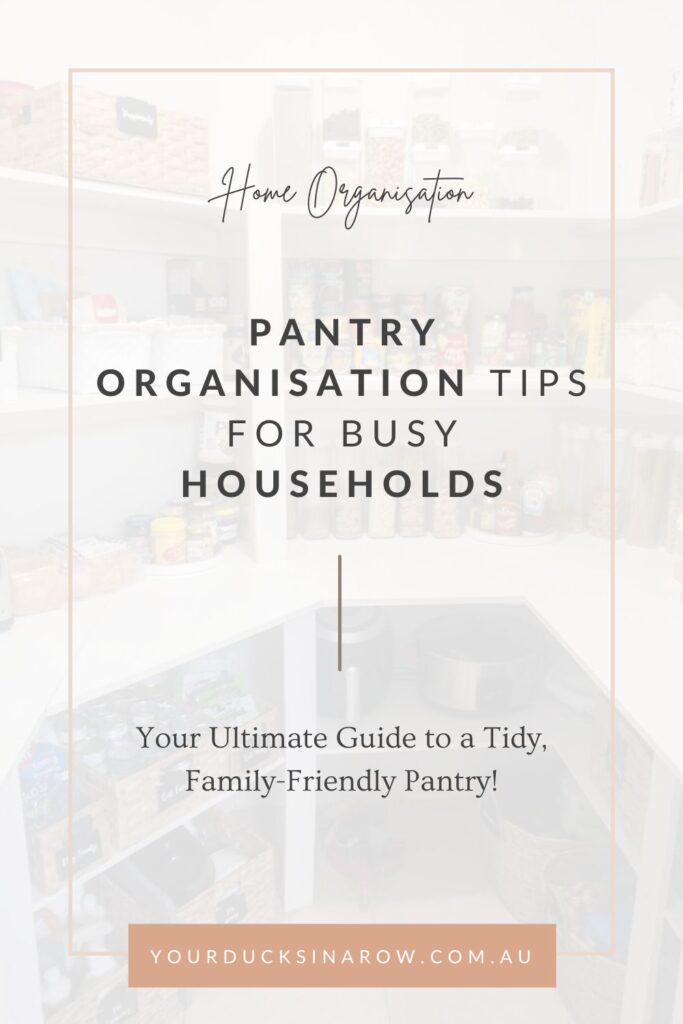
Why Pantry Organisation Matters for Busy Families
A messy pantry isn’t just a visual issue, it directly affects how efficiently your household runs. Here’s how an organised pantry can benefit your daily life:
- Saves time during meal prep and grocery shopping
- Prevents overbuying or doubling up on pantry staples
- Reduces food waste by keeping items visible and accessible
- Improves kitchen functionality, making cooking more enjoyable
- Helps children and partners find what they need without asking
A pantry that’s tailored to your family’s needs turns the kitchen into a more collaborative and less stressful space. You’ll find that even your kids may get involved in packing lunches or grabbing their own snacks, win-win!
Step 1: Declutter and Take Stock
The first step to any successful pantry makeover is a complete declutter. Pull everything out of your pantry, yes, everything. Check use-by dates, throw away anything expired or stale, and donate unopened non-perishables you know you won’t use.
Pantry Decluttering Tips:
- Toss anything that smells off or has damaged packaging
- Group like-items together as you sort (e.g. baking, snacks, spices)
- Make a list of what you have on hand to avoid unnecessary duplicates
This is also a great opportunity to rethink what you actually need to store in your pantry. Do you really use four kinds of flour? Do you have eight opened packs of pasta? Getting clear on what you actually use makes it easier to keep things organised long-term.
Pro Tip: Take a “before” photo so you can appreciate your hard work later!
Step 2: Clean and Prep Your Space
Once your pantry is empty, give it a thorough clean. Wipe down shelves, vacuum crumbs from corners, and consider using non-slip shelf liners for easy maintenance and extra grip.
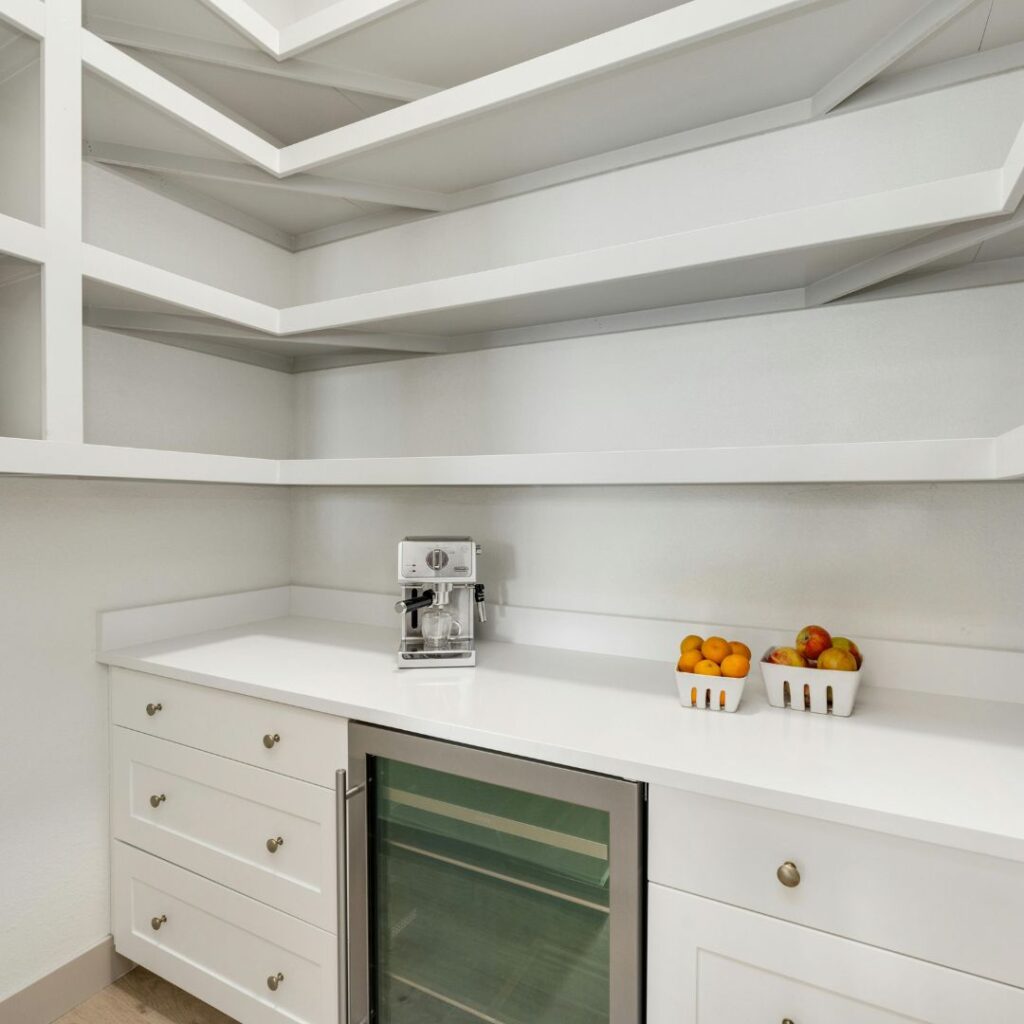
Cleaning Tips for Pantry Shelves:
- Use a mix of vinegar and water for a non-toxic clean
- Let everything dry completely before restocking
- Add moisture absorbers like baking soda or charcoal to keep it fresh
This step gives you a blank canvas to work with, and it feels good. A clean pantry not only looks better but also helps keep food fresher and pests away. Consider using pretty liners or even adding a pop of peel-and-stick wallpaper if you want a visual refresh.
Step 3: Categorise and Zone Your Pantry
Now it’s time to create pantry zones based on how your household uses food. Grouping similar items together improves visibility and helps everyone know where things belong.
Common Pantry Categories:
- Baking supplies (flour, sugar, bicarb soda, etc.)
- Breakfast items (cereal, oats, spreads)
- Snacks (bars, chips, crackers)
- Canned and jar goods (beans, tomatoes, sauces)
- Grains and pasta
- Tea and coffee station
- Condiments and oils
- Spices and seasonings
For large families, consider creating a lunchbox station with snacks and sandwich items stored together for quicker morning prep.
Zoning your pantry this way helps streamline daily tasks. You’ll notice fewer duplicates and less food waste just by knowing exactly where things live.
Step 4: Use the Right Storage Solutions
Investing in the right storage is key to long-term pantry organisation. Clear containers, baskets and tiered racks can dramatically improve visibility and access.
Recommended Pantry Storage Items:
- Clear, airtight containers: Ideal for dry goods like pasta, rice and cereal
- Baskets or bins: Perfect for grouping snacks, packets or baking supplies
- Lazy Susans: Great for oils, vinegars and sauces
- Tiered shelf risers: Elevate canned goods so nothing gets lost at the back
- Labelled jars: A stylish and practical way to store frequently used items
Australian favourites like Tupperware, IKEA KUGGIS boxes or Kmart pantry storage containers offer affordable, functional solutions.
Good storage doesn’t have to be expensive, it just needs to be well-planned. Think about your pantry layout and how your family moves through the space when choosing the best mix of solutions.

Step 5: Label Everything
Labelling is a small step with a big payoff. It keeps your pantry looking tidy and makes it easy for the whole family to maintain the system.
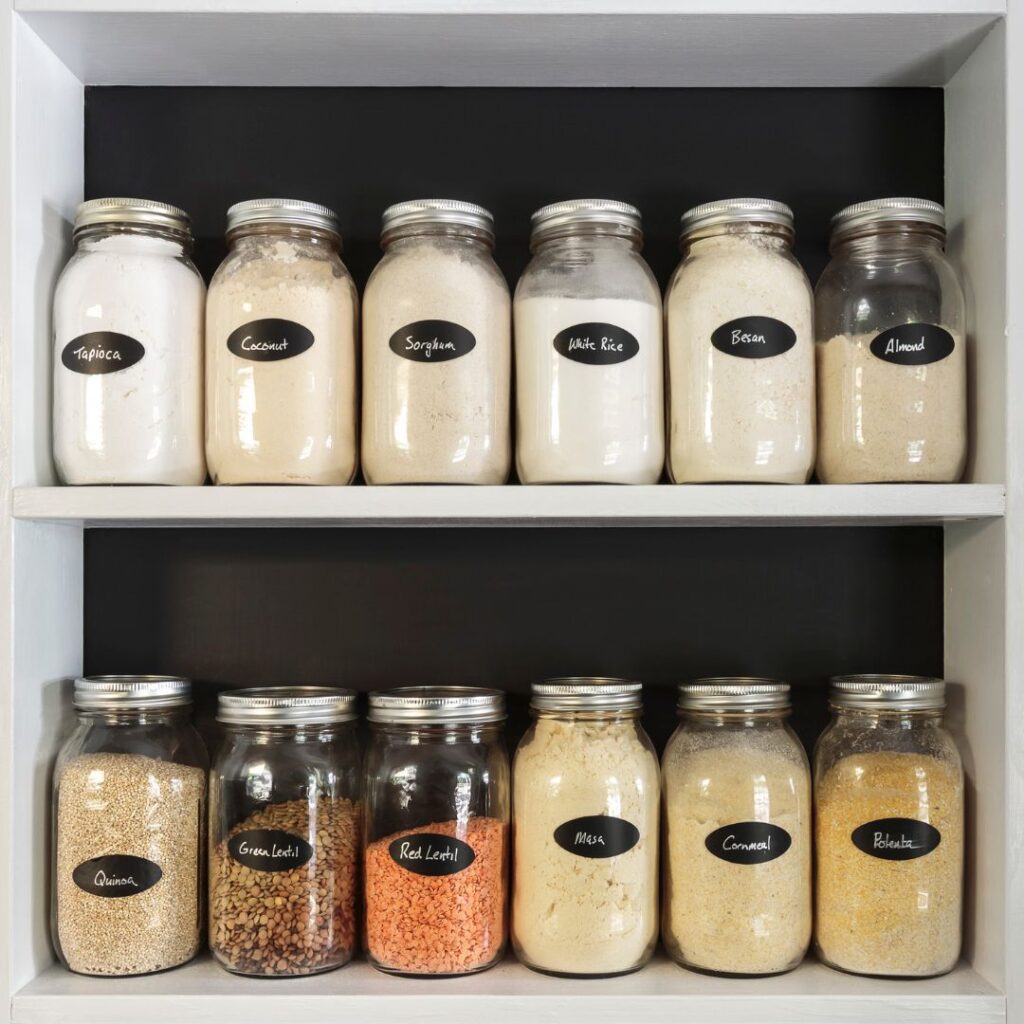
Labelling Ideas:
- Use chalkboard or waterproof vinyl labels
- Include expiry dates on the back of containers
- Label shelf zones if you’re not using individual containers
Pro Tip: For a more flexible option, use removable labels so you can adjust as your pantry evolves.
When everything has a clear label, there’s no second-guessing. It also cuts down on the number of times someone asks, “Where’s the rice?” which might be the biggest bonus of all.
Step 6: Optimise for Everyday Use
An organised pantry should work for your daily routine, not against it. Think about how often you use certain items and where they should be placed.
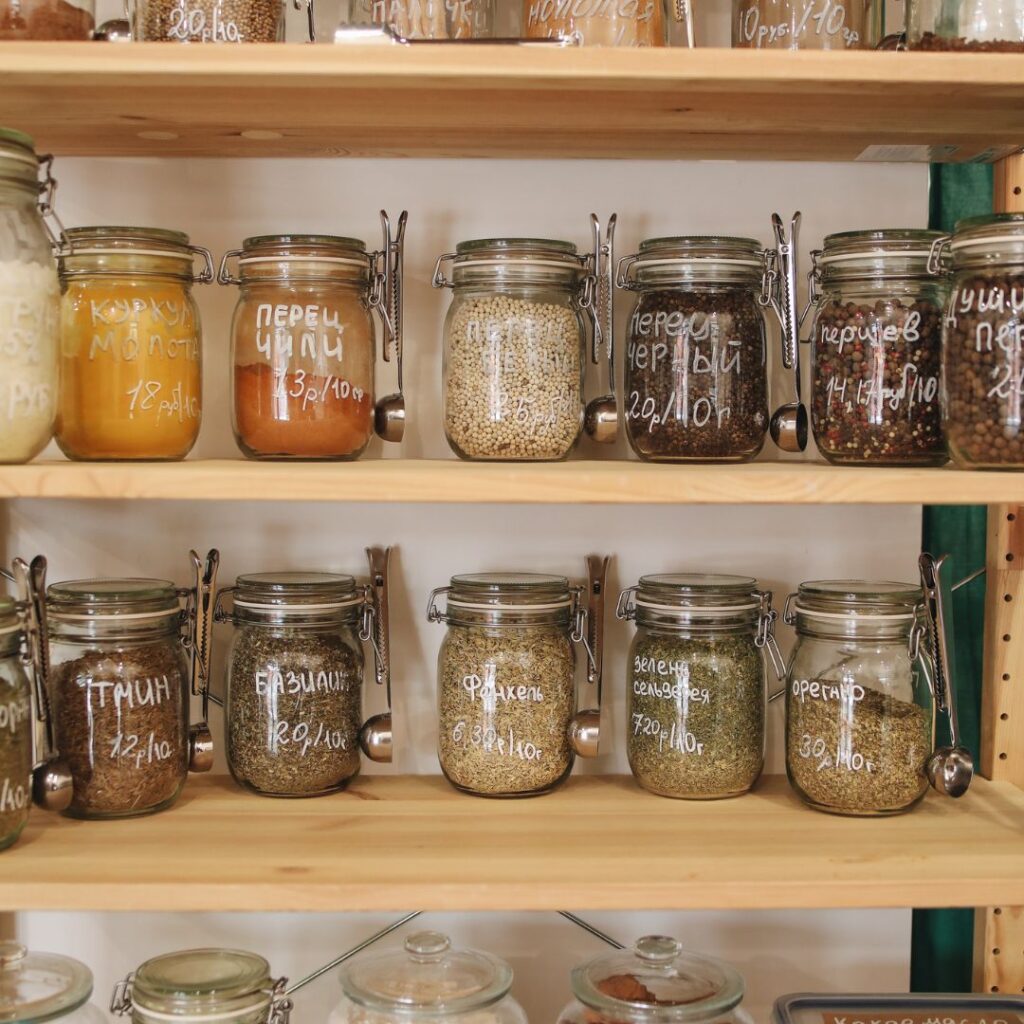
Pantry Layout Tips:
- Keep everyday essentials like cereal and bread at eye level
- Place bulk items or extras on higher or lower shelves
- Create a kid-friendly snack zone at a lower height for easy access
- Store rarely used items (like cake decorating supplies) toward the back
Make sure your system matches your actual habits, not just what looks good on Pinterest. Real life is messy, and your pantry should be able to handle it.
Step 7: Maintain the System
Maintaining an organised pantry doesn’t need to be a weekly chore. With a bit of routine, it can stay in shape with minimal effort.
Maintenance Habits:
- Do a mini tidy-up every fortnight
- Check expiry dates monthly
- Rotate stock, place new items behind older ones
- Reassess zones if your lifestyle changes (e.g. school holidays, new diet)
It helps to do a seasonal reset, think of it as spring cleaning for your pantry. This keeps the space working for your current needs, not last year’s meal plan.
Common Pantry Organisation Mistakes to Avoid!
- Overstuffing: A crowded pantry is hard to navigate.
- Lack of labels: If nothing is labelled, things quickly go back to chaos.
- Ignoring expiry dates: A monthly check-in helps prevent surprises.
- Not customising for your family: Make sure your system fits your lifestyle and food habits.
These common mistakes are easy to fall into, but they’re just as easy to avoid with a little intention and planning.
An organised pantry doesn’t have to look Pinterest-perfect. It just needs to work for your life. When everything has a place and the system makes sense for your household, mealtime becomes easier, shopping gets simpler, and those midweek dinner meltdowns become a lot less frequent.
Whether you’re a working parent, full-time carer or simply trying to streamline your daily routine, these pantry organisation tips can transform the heart of your home. A bit of effort upfront pays off in more relaxed evenings, quicker breakfasts, and fewer wasted groceries.
Need a hand creating a pantry system that actually fits your family’s lifestyle? Book your free consultation with Ducks in a Row Home Organisation and let’s turn your chaos into calm, one shelf at a time.


